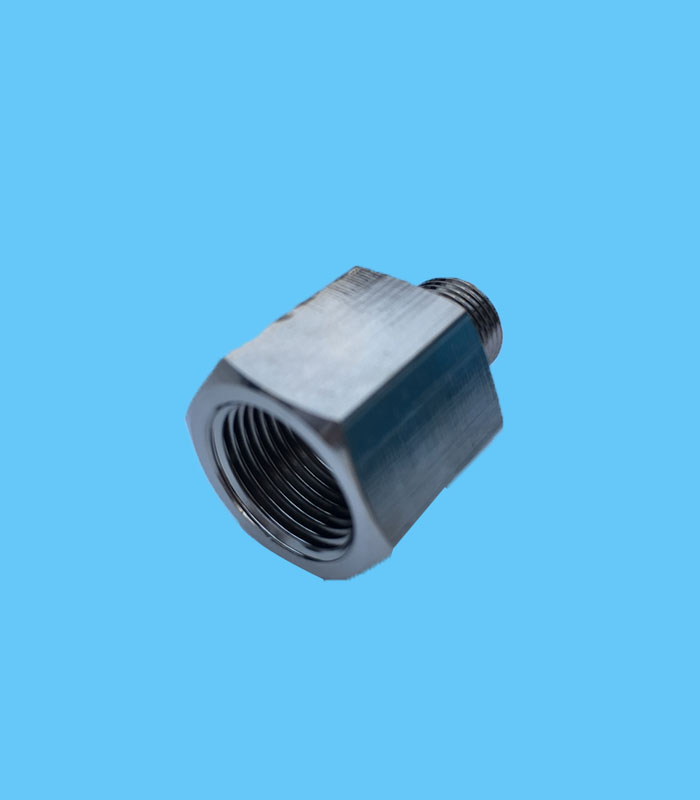Experienced metal lathe tools and accessories from China
During CO2 arc welding, since the surface of the molten pool is not covered by slag, the CO2 gas flow has a strong cooling effect, so the metal in the molten pool solidifies faster, but when the gas does not have time to escape, it is easy to generate pores in the weld. Experienced metal lathe tools and accessories from China
There are three main types of pores that may be generated: carbon monoxide pores, hydrogen pores and nitrogen pores.- Carbon monoxide pores
The reason for the generation of CO pores is mainly due to the following reduction reactions of FeO and C in the molten pool:
FeO+C==Fe+COThe reaction is more intense when the molten pool is at the crystallization temperature. Since the molten pool has begun to solidify at this time, CO gas is not easy to escape, so CO pores are formed in the weld. If the welding wire contains enough deoxidizing elements Si and Mn, and the carbon content in the welding wire is limited, the above-mentioned reduction reaction can be suppressed and the generation of CO pores can be effectively prevented. Therefore, in CO2 arc welding, as long as the welding wire is properly selected, the possibility of generating CO pores is very small.Experienced metal lathe tools and accessories from China - Hydrogen pores
If a large amount of hydrogen is dissolved in the molten pool at high temperature and cannot be fully discharged during the crystallization process, it will remain in the weld metal to form pores.The hydrogen in the arc area mainly comes from the welding wire, the oil and rust on the surface of the workpiece, and the moisture contained in the CO2 gas. The oil stains are hydrocarbons, and the rust contains crystal water, which can decompose hydrogen at the high temperature of the arc. Reducing the amount of hydrogen dissolved in the molten pool can not only prevent hydrogen holes, but also improve the plasticity of the weld metal. Therefore, on the one hand, the oil and rust on the surface of the workpiece and the welding wire should be properly removed before welding, and on the other hand, CO2 gas with low water content should be used as much as possible. Moisture in CO2 gas is often the main cause of hydrogen pores. In addition, hydrogen is dissolved in the molten pool in the form of ions. When the DC polarity is reversed, the molten pool is the negative electrode, which emits a large number of electrons, so that the hydrogen ions on the surface of the molten pool are recombined into atoms, thus reducing the number of hydrogen ions entering the molten pool. Therefore, when the DC polarity is reversed, the hydrogen content in the weld is 1/3 to 1/5 of the positive polarity, and the tendency to generate hydrogen holes is also smaller than that of the positive polarity.Experienced metal lathe tools and accessories from China - Nitrogen holes
The source of nitrogen: one is the air intrusion into the welding area; the other is the impure CO2 gas. The test shows that adding φ(N2)=3% nitrogen gas to CO2 gas during short-circuit transition and adding φ(N2)=4% nitrogen gas to CO2 gas during jet transition will still not produce nitrogen holes. The normal gas contains very little nitrogen, φ (N2) ≤ 1%. It can be inferred from the above that it is unlikely that nitrogen holes are caused by impure CO2 gas. The main reason for nitrogen holes in the weld is that the protective gas layer is damaged and a large amount of air intrudes into the welding area.The factors that cause the failure of the protective gas layer are: too small CO2 gas flow; the nozzle is partially blocked by splashes; the distance between the nozzle and the workpiece is too large, and there is lateral wind in the welding site. Therefore, it is the key to prevent nitrogen holes in the weld to properly increase the flow rate of the CO2 shielding gas to ensure the smooth flow of the gas path and the stability and reliability of the gas layer. In addition, process factors also have an impact on the generation of pores. The higher the arc voltage, the greater the possibility of air intrusion, and the more likely that porosity will be created. The welding speed mainly affects the crystallization speed of the molten pool. When the welding speed is slow, the crystallization of the molten pool is also slow, and the gas is easy to escape; when the welding speed is fast, the crystallization of the molten pool is fast, the gas is not easily discharged, and pores are easily generated.Experienced metal lathe tools and accessories from China

CNC Machining Service & CNC Machining partsCNC Machining Experts serving Global Industries. Deliver perfect parts, on time, at affordable prices. Armed with the industry-leading technology and techniques. All samples are free!China’s largest manufacturing companies. Precise component manufacture ltd. Rapid prototype machining, rapid prototype parts.
